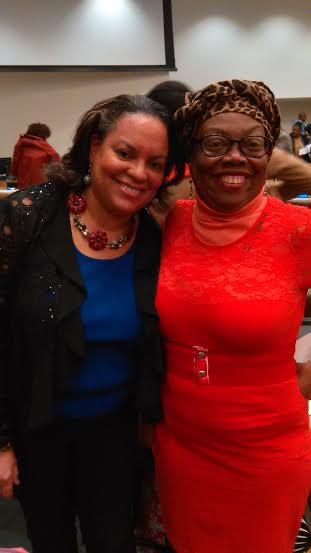Murphy Browne © May 6-2021
ROBERT SMALLS MAY 13-1862
At approximately 3:00 a.m on May 13, 1862, 159 years ago, an enslaved African man outwitted the Confederates and piloted one of their warships into the possession of the Union Navy. Robert Smalls was 23-years-old when he executed this heroic feat at the height of the American Civil War and contributed to the eventual victory of the Union side of the conflict. Reports in Northern newspapers referred to Smalls’ delivering of the Planter to the Union Navy as “the first trophy from Fort Sumter.” An article published in The New York Herald on May 18, 1862 included this information: “One of the most daring and heroic adventures since the war commenced was undertaken and successfully accomplished by a party of negroes in Charleston on Monday night last. Nine colored men, comprising the pilot, engineers and crew of the rebel gunboat Planter, took the vessel under their exclusive control, passed the batteries and forts in Charleston harbor, hoisted a white flag, ran out to the blockading squadron, and thence to Port Royal, via St. Helena Sound and Broad river, reaching the flagship Wabash shortly after ten o’clock last evening.”
Robert Smalls remains a little-known figure outside of South Carolina. His heroic actions on May 13, 1862 are not as well-known as lesser actions by White Civil War “heroes” because contrary to popular opinion the Civil War was not fought to end slavery in the USA. Northern White politicians, fighting men and women of the Union did not care if slavery continued into perpetuity because they did not consider Africans their equal. Some White people may have thought that it was wrong to hold people in slavery, exploiting their labour without pay, buying and selling them, but even those abolitionists did not think that Africans were their equal. None of them would have been willing to make the ultimate sacrifice to end slavery. The Southerners or members of the Confederacy were willing to risk their lives to preserve slavery from which they benifitted enormously. Their very existence depended on enslaving and exploiting Africans.
Smalls was born on April 5, 1839 in Beaufort, South Carolina to Lydia, an enslaved African woman. Smalls and his mother were both “house slaves” yet he seized the opportunity to flee slavery. In his 1971 published book From Slavery to Public Service Robert Smalls 1839-1915 Professor Okun Edet Uya wrote: “Lydia was born a slave on the Ashdale Plantation located on Ladies Island, about a half hour’s row across from Beaufort and five hour’s row across the river from Hilton Head at the entrance to Port Royal on the Sea Islands of South Carolina. Lydia’s son Robert was born on April 5, 1839, in the McKee slave quarters on Prince Street. Following the end of the Civil War, during the Reconstruction period when for a short period the federal government made an attempt to include rights for African Americans, Smalls was elected to office first as State Representative in South Carolina and eventually as a member of the U.S House of Representatives. He was a state representative from 1868-1870 and state senator from 1870-1874. In 1874 he was elected to the U.S. House of Representatives.”
In his 2009 published book Yearning to Breathe Free: Robert Smalls of South Carolina and His Families, Andrew Billingsley describes Smalls’ absence from the history books. “The South Carolina history books I grew up with contained no mention, not even foot notes, of Robert Smalls and his extraordinary contributions to our state’s history. South Carolina has done little to honor or remember this significant figure. Outside his native Beaufort County, I know of no towns or streets named in his honor. Yet Robert Smalls should rank among the most honored and recognized South Carolinians, but he does not simply because of the color of his skin.” In March 2021, a “revived Army watercraft” which was “supposed to be decommissioned by the military, was brought back into active service and named for Robert Smalls.”
In Canada there is a similar lack of recognition of African Canadians who have contributed in various ways. There are no streets, buildings or schools in Toronto named for Lucie and Thornton Blackburn who established Toronto’s first taxicab in 1837. Lucie Blackburn lived on Bleecker Street from 1890 to 1895 after her husband transitioned in 1890, yet there was great resistance from the Municipal government to name a building on Bleecker Street in honour of this African Canadian couple who made significant contributions to Toronto. The building was named the Wellesley Community Centre and the library in the building, the St Jamestown Library. Neither St James nor Lord Wellesley ever lived in Toronto. In 2016, a room at the George Brown College student residence in Toronto was named the Lucie & Thornton Blackburn Conference Centre.
In 2020, there were calls to rename streets like Dundas Street and Jarvis Street in Toronto that were named in honour of Scottish politician Henry Dundas, who was instrumental in delaying the abolition of the Trans-Atlantic slave trade and William Jarvis who was a slave holder. In 2021, the 6th year of the United Nations (UN) declared https://www.un.org/en/observances/decade-people-african-descent
There are around 200 million people identifying themselves as being of African descent live in the Americas. The promotion and protection of human rights of people of African descent has been a ... www.un.org |
Murphy Browne © May 6-2021

































